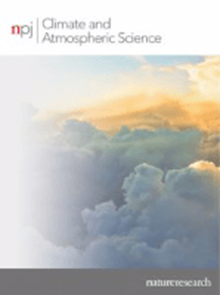Potential tropical cyclone movement and intensification factors imaged by spaceborne SAR
IF 8.4
1区 地球科学
Q1 METEOROLOGY & ATMOSPHERIC SCIENCES
引用次数: 0
Abstract
Spaceborne synthetic aperture radar (SAR) is a microwave sensor that captures tropical cyclones (TCs) with high spatial resolution. Based on three idealized TC parametric wind models, we provide a comprehensive perspective on TC studies using SAR observations, including surface winds, morphology, eye shape, asymmetry, inflow angle, steering flow, secondary eyewalls, vortex Rossby waves, spatial rain bands, and other small-scale dynamics, contributing to a better understanding of TC movement and intensification.

星载SAR成像的潜在热带气旋运动和增强因素
星载合成孔径雷达(SAR)是一种高空间分辨率捕获热带气旋的微波传感器。基于三种理想的TC参数风模式,我们提供了基于SAR观测的TC研究的综合视角,包括地面风、形态、眼形、不对称、入流角、转向流、二次眼壁、涡罗斯比波、空间雨带等小尺度动态,有助于更好地理解TC的运动和增强。
本文章由计算机程序翻译,如有差异,请以英文原文为准。
求助全文
约1分钟内获得全文
求助全文
来源期刊

npj Climate and Atmospheric Science
Earth and Planetary Sciences-Atmospheric Science
CiteScore
8.80
自引率
3.30%
发文量
87
审稿时长
21 weeks
期刊介绍:
npj Climate and Atmospheric Science is an open-access journal encompassing the relevant physical, chemical, and biological aspects of atmospheric and climate science. The journal places particular emphasis on regional studies that unveil new insights into specific localities, including examinations of local atmospheric composition, such as aerosols.
The range of topics covered by the journal includes climate dynamics, climate variability, weather and climate prediction, climate change, ocean dynamics, weather extremes, air pollution, atmospheric chemistry (including aerosols), the hydrological cycle, and atmosphere–ocean and atmosphere–land interactions. The journal welcomes studies employing a diverse array of methods, including numerical and statistical modeling, the development and application of in situ observational techniques, remote sensing, and the development or evaluation of new reanalyses.
 求助内容:
求助内容: 应助结果提醒方式:
应助结果提醒方式:


